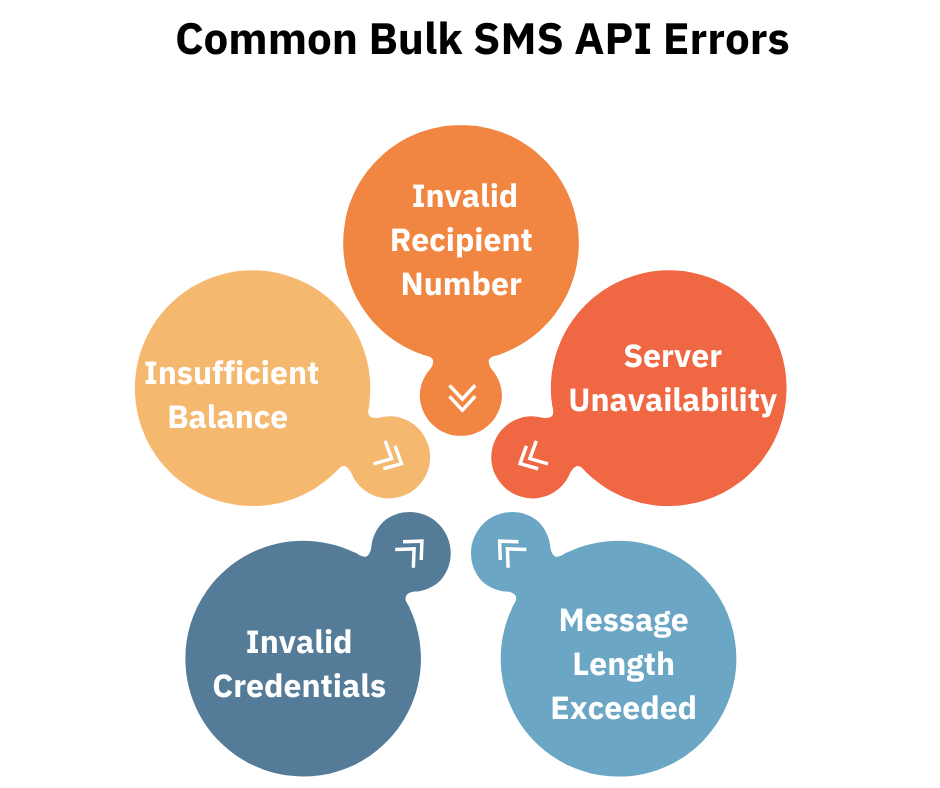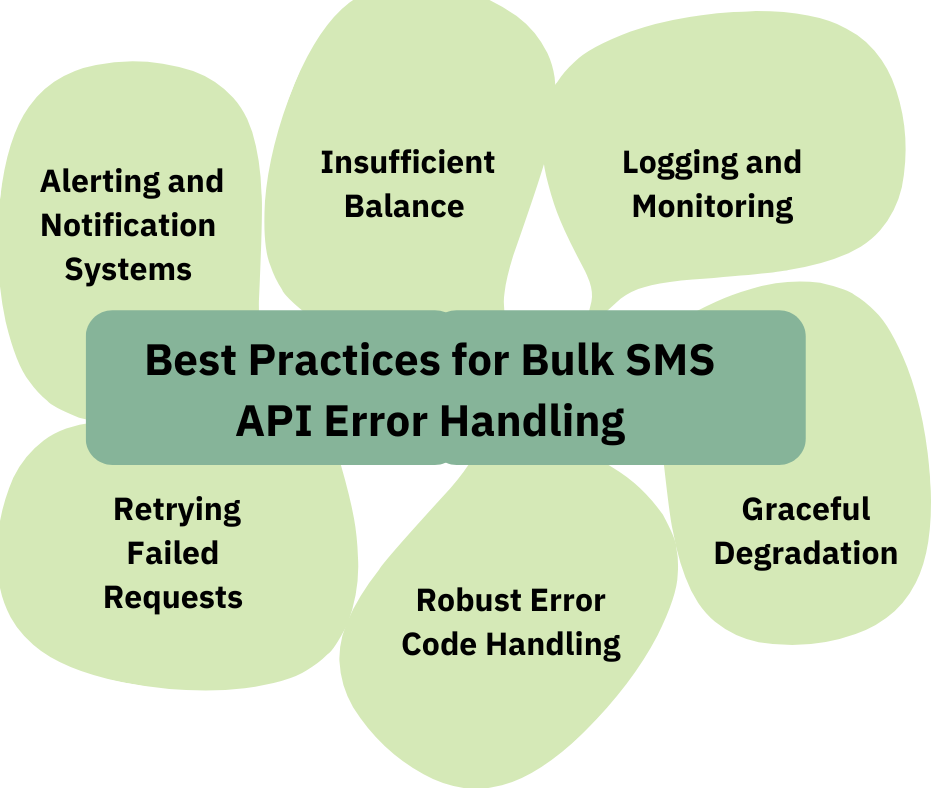Bulk SMS API Error Handling and Troubleshooting
The API serves as a bridge between the sender’s application and the SMS gateway, enabling seamless communication.
Through the API, developers can integrate SMS capabilities into their applications, allowing them to automate the sending of alerts, notifications, marketing messages, and much more.
Error handling and troubleshooting are critical components when working with a Bulk SMS API.
Given the reliance on external systems for message delivery, various issues may arise, ranging from technical glitches to user errors.
Proper error handling can significantly improve the user experience and overall effectiveness of the SMS service.
Common Bulk SMS API Errors
When utilizing a Bulk SMS API, you may encounter a variety of errors that can hinder successful message delivery. Here’s a detailed breakdown of common issues you might face:
Invalid Credentials
This error occurs when the API key or authentication details provided are incorrect or have not been properly configured.
Double-check your credentials to ensure they match what is required by the SMS service provider. It’s important to keep these details secure, as sharing them can lead to unauthorized access to your account.
Insufficient Balance
Before sending messages, it’s essential to verify that you have enough balance in your account. Bulk SMS services usually require a prepaid balance or credits for message delivery.
If your account balance is low or depleted, you will encounter this error. Regularly monitoring your balance can help prevent interruptions in your messaging service.

Invalid Recipient Number
This error occurs when the recipient’s phone number is not formatted correctly or is invalid. Ensure that the number includes the correct country code and adheres to the format specified by your SMS service provider.
Common mistakes include omitting the country code or including extra characters or spaces.
Message Length Exceeded
Most SMS services have a character limit for a single message, typically around 160 characters for standard SMS.
If your message exceeds this limit, it may need to be split into multiple messages, which can incur additional costs. Always try to keep your messages concise and to the point to avoid this issue.
Server Unavailability
This error indicates that the SMS service provider’s server is temporarily unreachable. This could be due to maintenance, high traffic, or technical issues on the provider’s end.
In such cases, it’s advisable to wait for a short period and then attempt to resend your messages. Keeping an eye on the service provider’s status updates can also provide insight into ongoing issues.
Understanding these common error messages can help you troubleshoot and resolve issues quickly, ensuring your bulk SMS campaigns run smoothly.
Best Practices for Bulk SMS API Error Handling
By following these best practices, organizations can enhance their bulk SMS communications, reduce downtime, and improve user experience overall.
Robust Error Code Handling
It’s crucial to implement a comprehensive system for handling error codes returned by the API. Each error code should be clearly defined, allowing for quick identification of the issue.
Create a mapping of error codes to specific actions or resolutions; for instance, if a “Rate Limit Exceeded” error appears, a pause or back-off strategy should be initiated.
Additionally, consider categorizing errors into critical, warning, and informational to prioritize response efforts.
Logging and Monitoring
Implement a detailed logging system that captures all API requests and responses, including timestamps, error codes, and payloads.
Using structured logging formats like JSON can facilitate easier searching and analysis. Regularly monitor these logs to detect patterns or recurring issues.
Employ monitoring tools that provide real-time insights and alerts when error rates exceed a defined threshold, ensuring that potential problems are addressed promptly.

Graceful Degradation
Design your SMS service to ensure that even in the event of partial failures, it continues to function to a certain extent.
For instance, if the primary API is down, consider routing requests to a backup API or queueing messages for later transmission.
Notify users of any service limitations transparently while maintaining as much functionality as possible, so they remain informed and engaged.
Retrying Failed Requests
Develop a systematic approach for retrying failed requests. Use exponential back-off strategies to intelligently space out retry attempts, which can help avoid overwhelming the API and triggering further errors.
Keep track of the number of retries and implement policies for failures after a certain threshold to prevent infinite loops or unnecessary resource consumption.
Alerting and Notification Systems
Establish a robust alerting system that notifies the development and operations teams of significant issues or downtimes.
Use tools that can integrate with your incident management systems for seamless communication. Consider implementing a status dashboard that allows stakeholders to view the health of your SMS service in real time.
Custom alerts for specific error types or patterns can help ensure that the right people are informed swiftly, facilitating faster resolutions.

